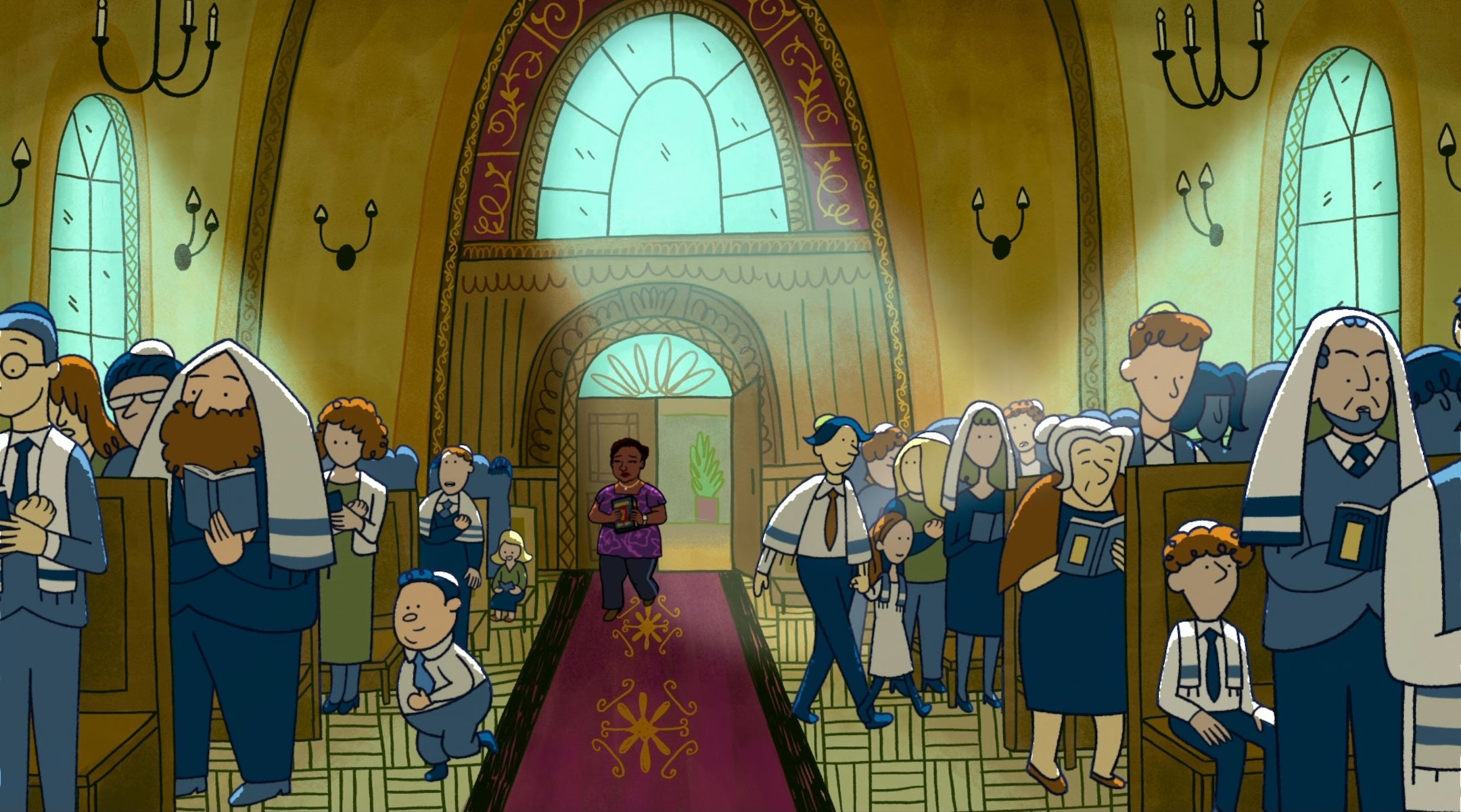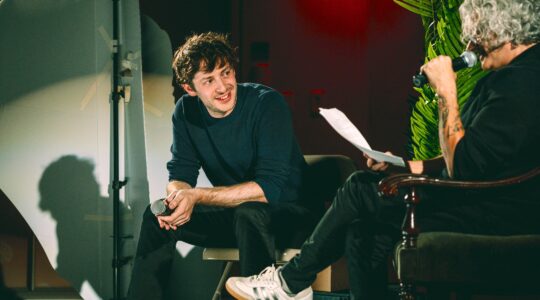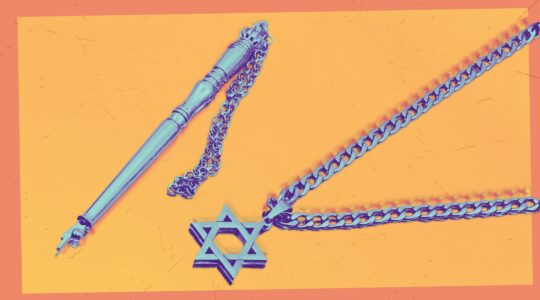This past Saturday night, during Selichot services, I led members of our congregation in our first recitation of “Ashamnu,” the confessional acrostic that we accompany by striking our hearts.
There will be many recitations of the confessional to follow in the coming weeks. Yet it is the first — said late at night, and not, in my community, in the midst of a great throng but instead in an intimate circle — that always moves me the most. I have long loved Selichot, which on the Saturday night before Rosh Hashanah begins a cycle of prayers for forgiveness. It is an experience that, for me, offers an invitation into the heights of the holidays themselves, but without the attendant rabbinic pressures — and it is often a highlight of my own Jewish year. So it was this week.
And then I went home, still humming “Ashamnu” and still thinking about my friends and family who sang it along with me, and something rather incredible happened. I turned on Netflix and there they were again: “Ashamnu,” Selichot and the extraordinary drama of the High Holidays, as I have never before seen them depicted in anything remotely mainstream.
In a storytelling landscape that almost always depicts American Jewish ritual life in terms that are wildly unrealistic (“Nobody Wants This”), pediatric (“You Are SO Not Invited To My Bat Mitzvah”), or chaotic bordering on hostile (“Bad Shabbos”), this was something different. In an unusually effective scene, one of the central characters in “Long Story Short” finds herself in shul, unexpectedly, on Yom Kippur. Like so many other scenes in Raphael Bob-Waksburg’s animated series about a Jewish family, it was letter-perfectly accurate, loving and profound. It was astonishing.
If you have already seen it, then you know. And if you have not seen it, in all seriousness and as a rabbi, I am advising you to binge the entire 10-episode run over the next week in preparation for Rosh Hashanah.
What is so incredible about the “Ashamnu” scene in particular — and this could also be said of the series as a whole — is how artfully it plays against much of what we’ve come to expect from depictions of synagogue life on television. Contemporary Jewish American artists, from Larry David to the Coen Brothers (many of them, perhaps, let down by synagogues at some point) tend to use synagogue scenes as grist for an endlessly satiric mill — the staid sanctuaries in which an unrepentant Larry commits his peccadillos, the horrific vacuousness of suburban Jewish life in “A Serious Man.” There are scattered exceptions, of course, and I admire both David and the Coens as brilliant and important Jewish storytellers. But there is more to say about Jewish American life, and synagogue-going, than is possible to say from within the four narrow cubits of satire.
Enter “Long Story Short,” which is certainly the most Jewish television show airing right now on any mainstream platform and also, very likely, among the most authentic pieces of Jewish American narrative art in the 21st century. And it is very funny. There are moments of satire, in particular a riotously funny send-up of bar mitzvah candle-lighting ceremonies in the opening episode. But unlike most other shows of its ilk, Judaism and the Jewish characters that populate the story (which is all of them, more or less) aren’t the joke. They are simply the reality, the context by which tragedy transforms itself into farce and farce, in turn, transforms itself into tragedy again.
And, though it might seem like a surprising thing to say about an animated series, it presents that reality with unflinching, almost documentary-like precision. Some examples:
- An unnamed character in the “Ashamnu“ scene appears in a full tallit (no church-style stole, like the one worn by Rabbi Noah Roklov in “Nobody Wants This”) and, when asked by a main character if he knows of “a guy named Noah here,” replies dryly, but not unkindly, “There are probably like 50 Noahs in here.”
- An old woman, also in a tallit, next to whom the main character takes a seat, explains lovingly that Jews confess in plural language.
- The episode that is largely devoted to parents trying to decide whether or not to send their children to a Jewish day school.
- The moment when an adult child, faced with a sibling’s increasing observance, tells their mother that there is no one right way to be Jewish, and the mother responds immediately (and I quote) with, “But there is — a progressive egalitarian Conservative Judaism with an emphasis on ritual and community over faith and blind practice. That’s literally the only way it makes sense. I figured it out. And I gave it to my children because I love them. But they reject it because they want to reject me.”
These examples — one of a vast number that I could recite — all speak to a core aspect of why I found the show so moving on Selichot night and why it is so wildly successful overall, both narratively and aesthetically. It’s packed with so many highly specific Jewish cultural and religious touchstones — not to mention untranslated and unexplained Hebrew phrases — that I suspect, absent a solid day-school education (Bob-Waksberg, the son of a Jewish educator, had one), aspects of it would seem abstruse if not unintelligible. It’s all so ardently, shockingly particularist, which is a crucial element of faithfully rendering any culture and something that I think about a lot, both as novelist and as a rabbi.
As Jews in America, most of us, either through osmosis or because we seek it out, come to know a great deal about the majority cultures that surround us. They know less about us. That has always been — and will always be — a structural aspect of minority experience. That is why it is an ongoing challenge, in many corners of the entertainment industry, to tell stories from the particularist perspectives of minority and under-represented groups. It’s a worthy, important goal, both ethically (because it’s the right thing to do) and aesthetically (because stories absent culture are bland).
But despite all the laudable effort towards diversifying the kinds of American stories we tell, I have never seen a show that depicts a Jewish American reality that is recognizable to me — hilarious, unabridged, profound and reverent. Until now.
Representation matters. Do yourself a favor and start binging.
JTA has documented Jewish history in real-time for over a century. Keep our journalism strong by joining us in supporting independent, award-winning reporting.






